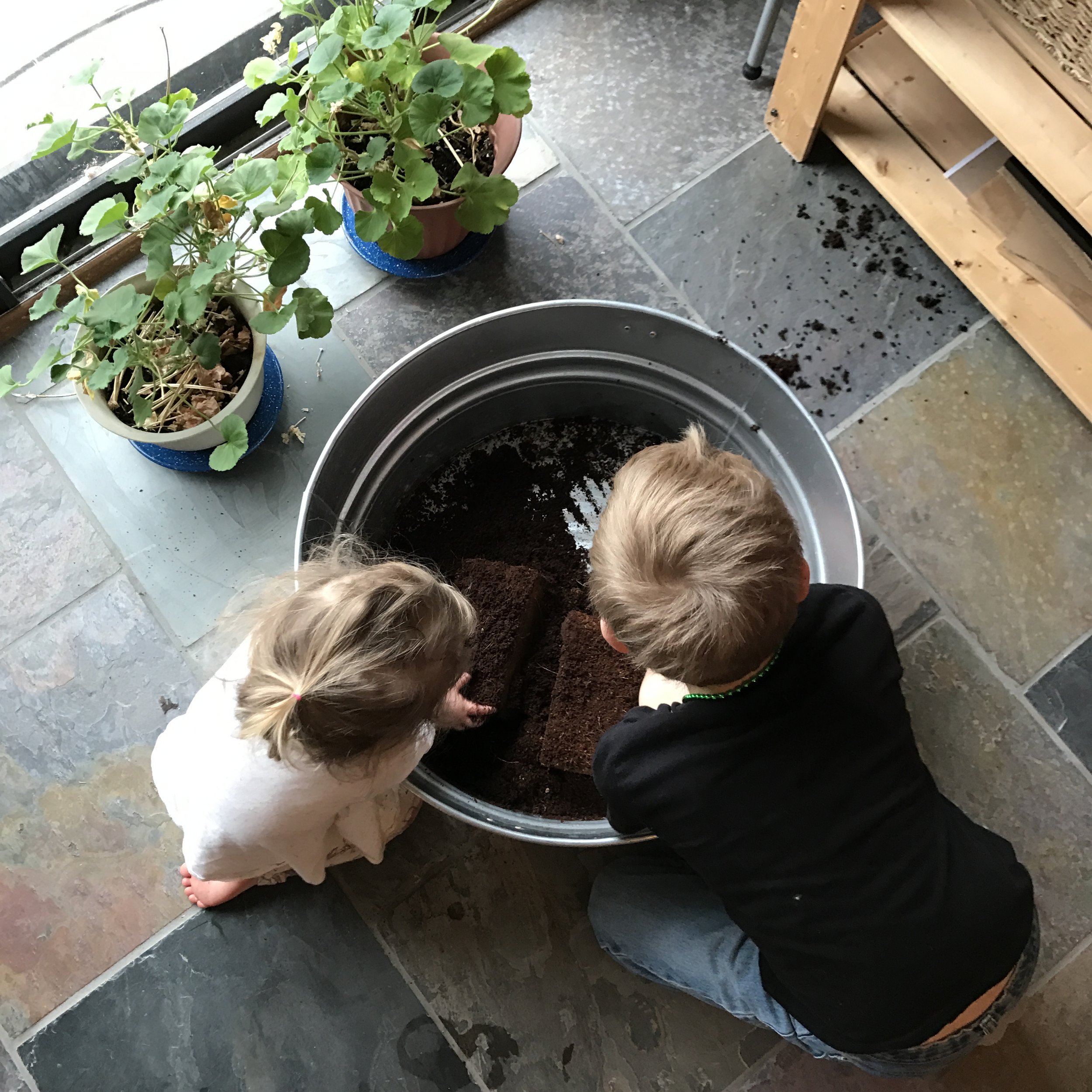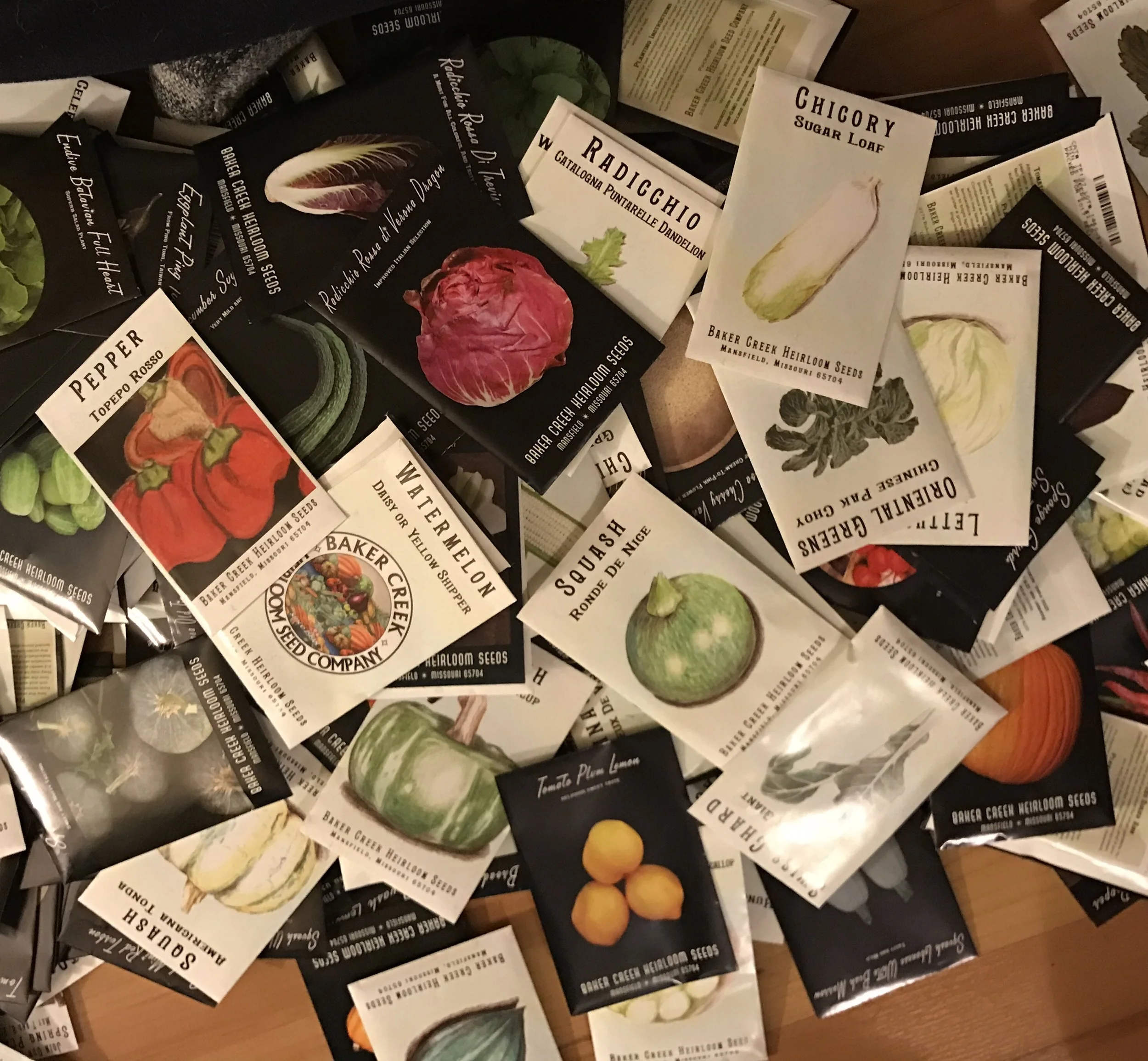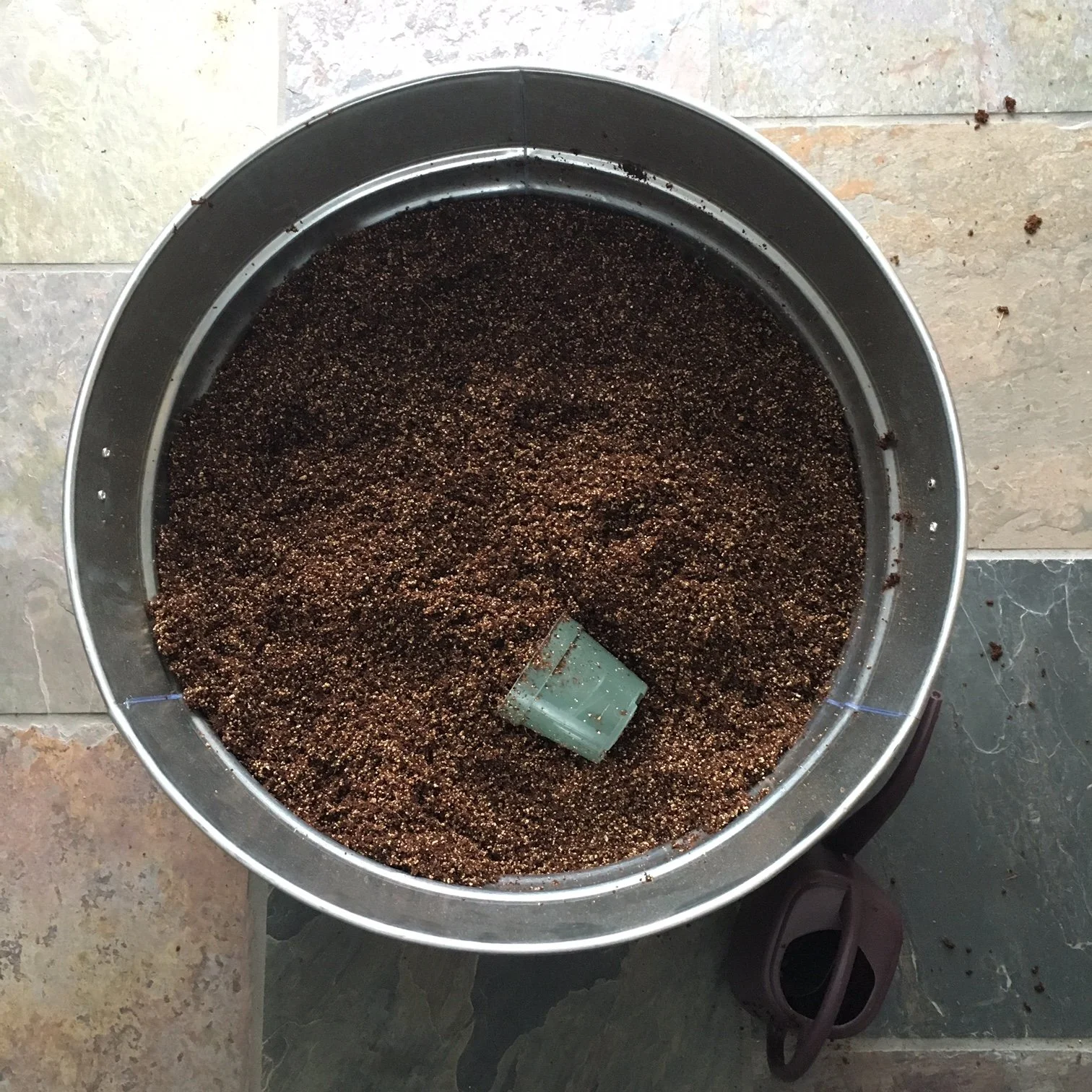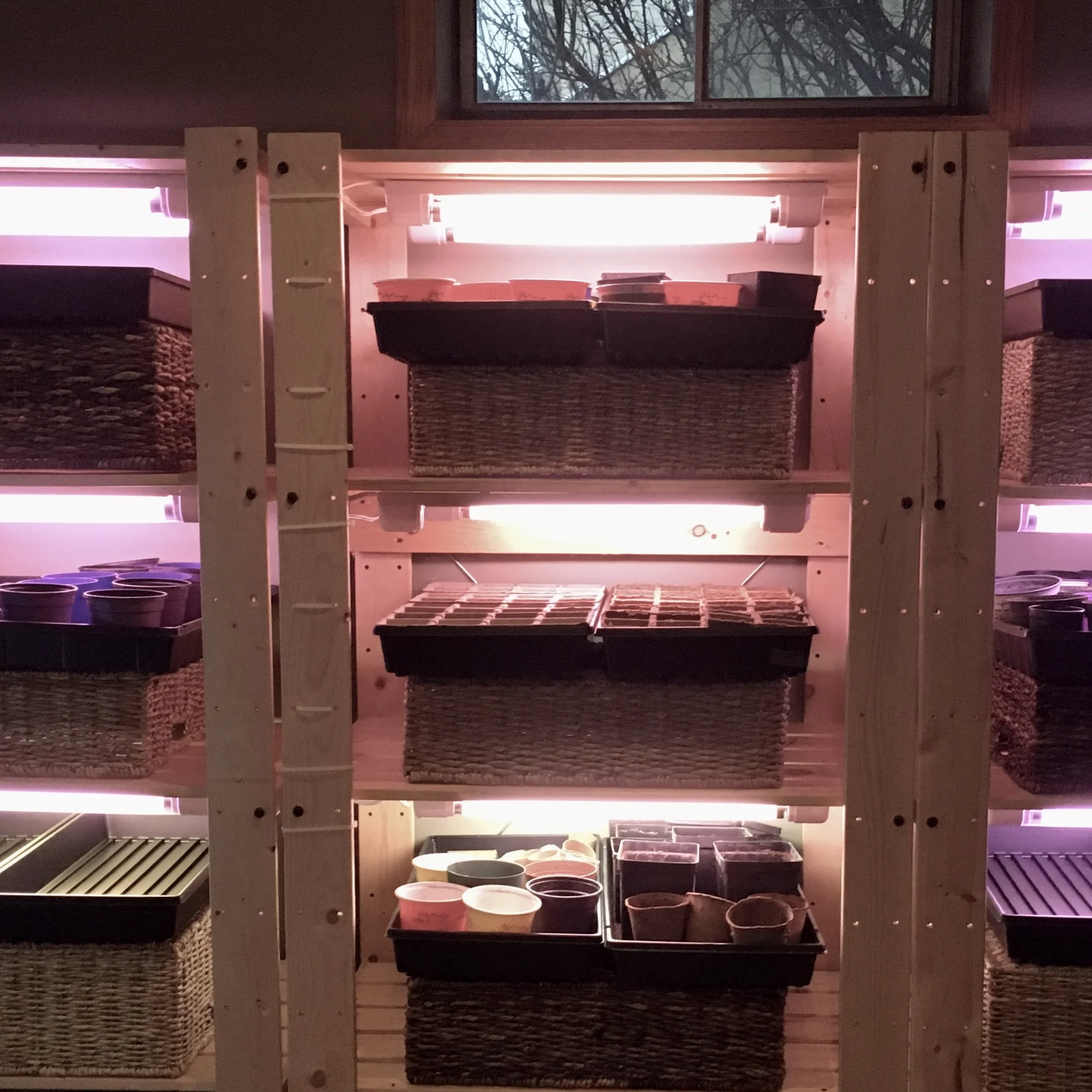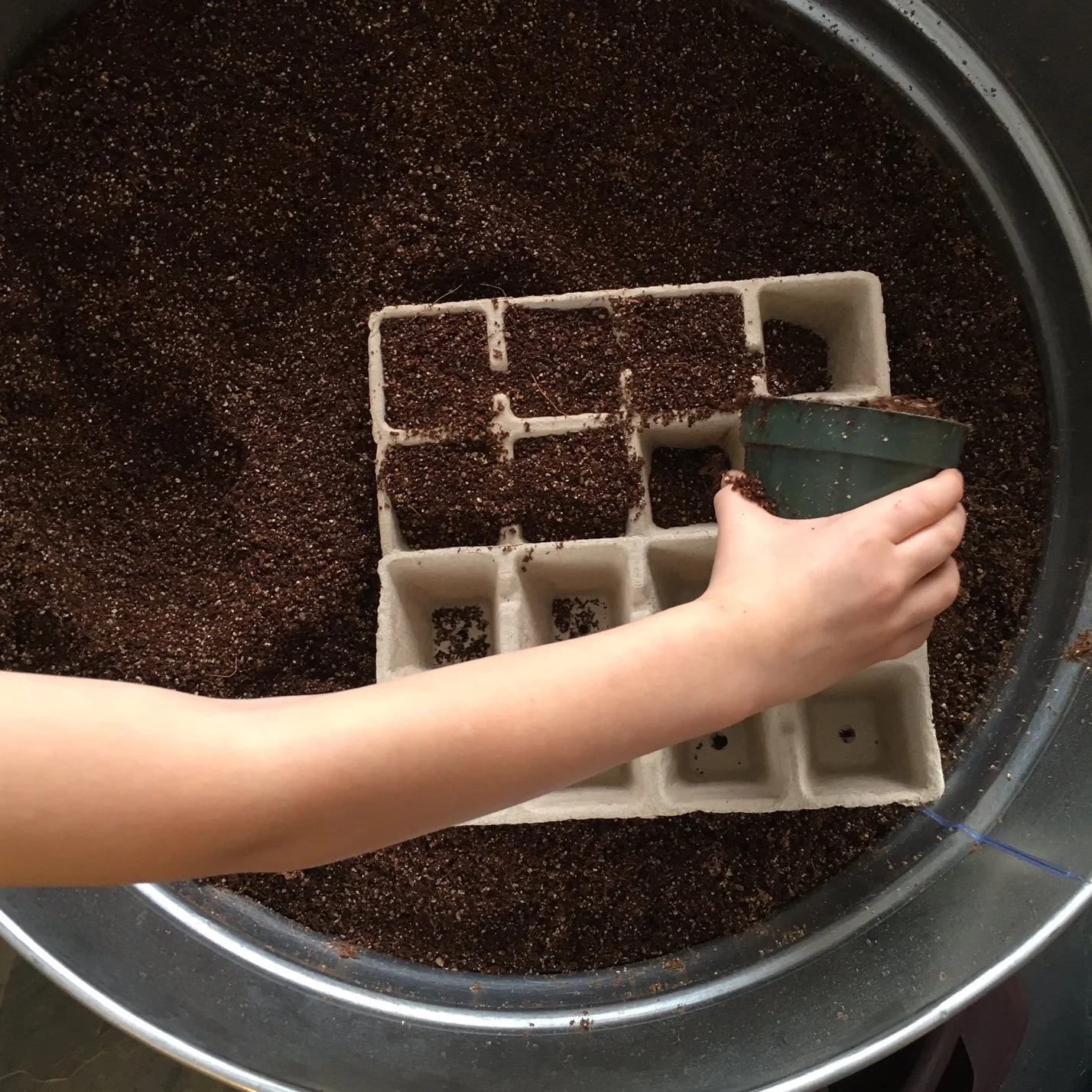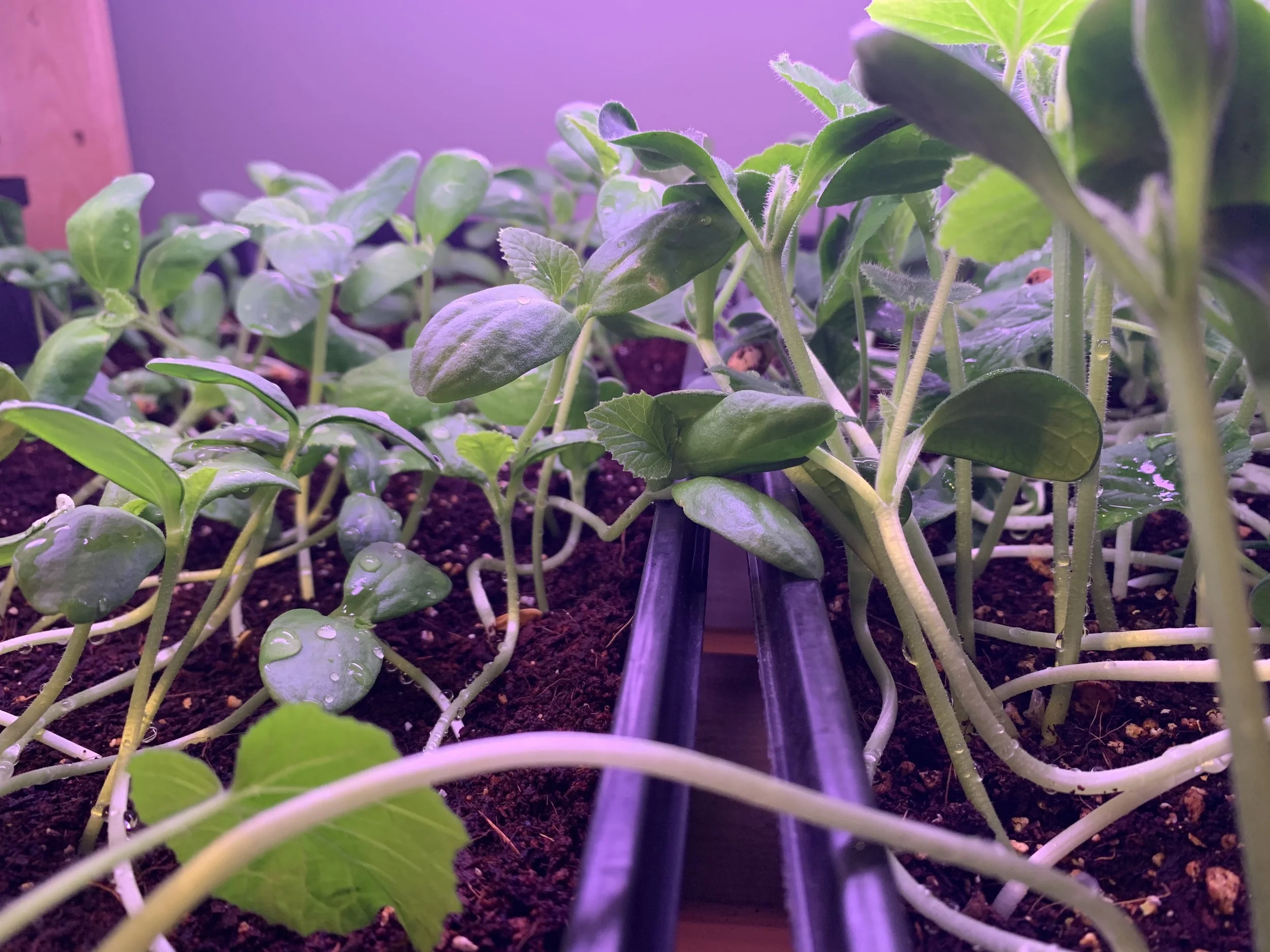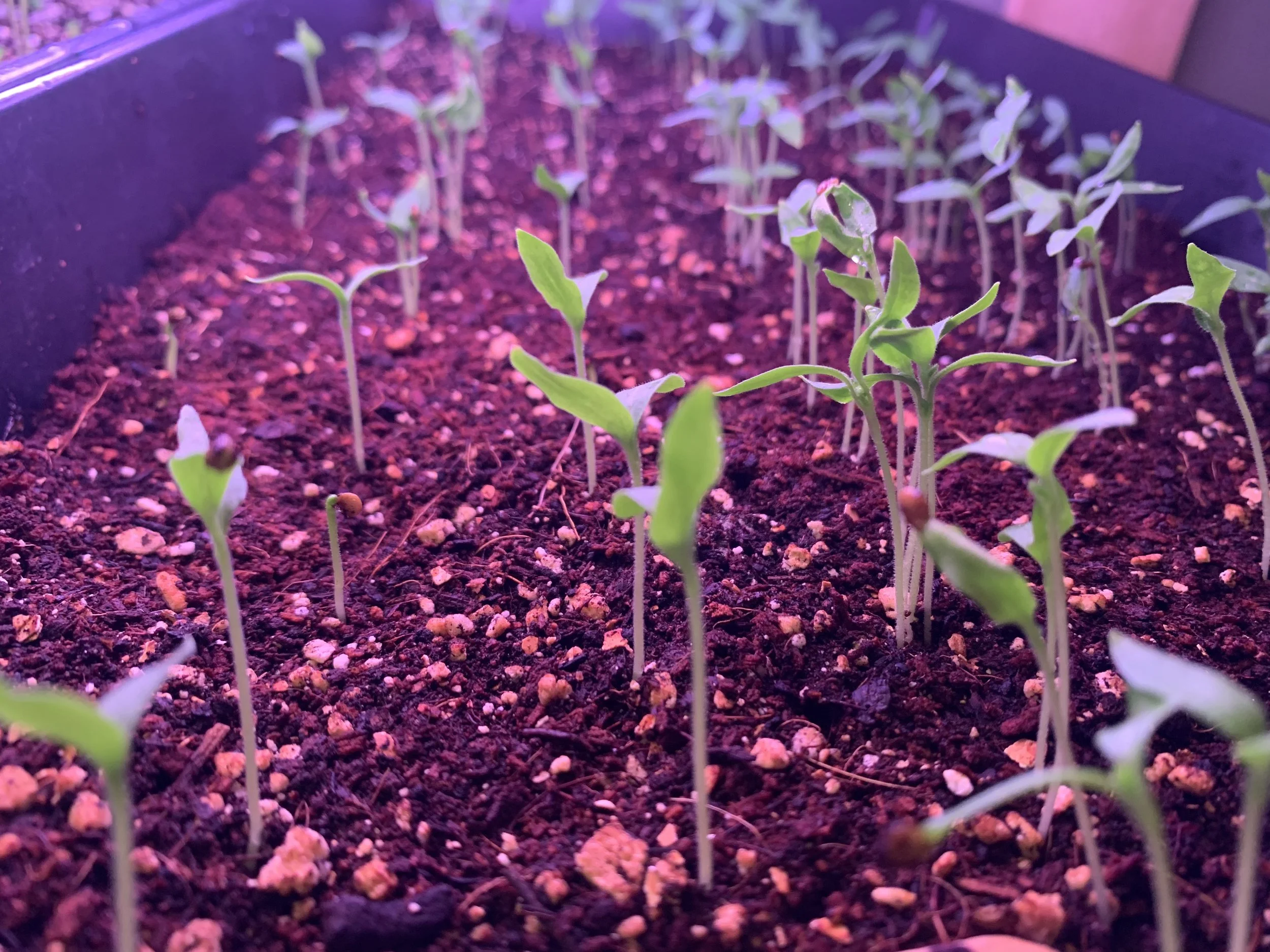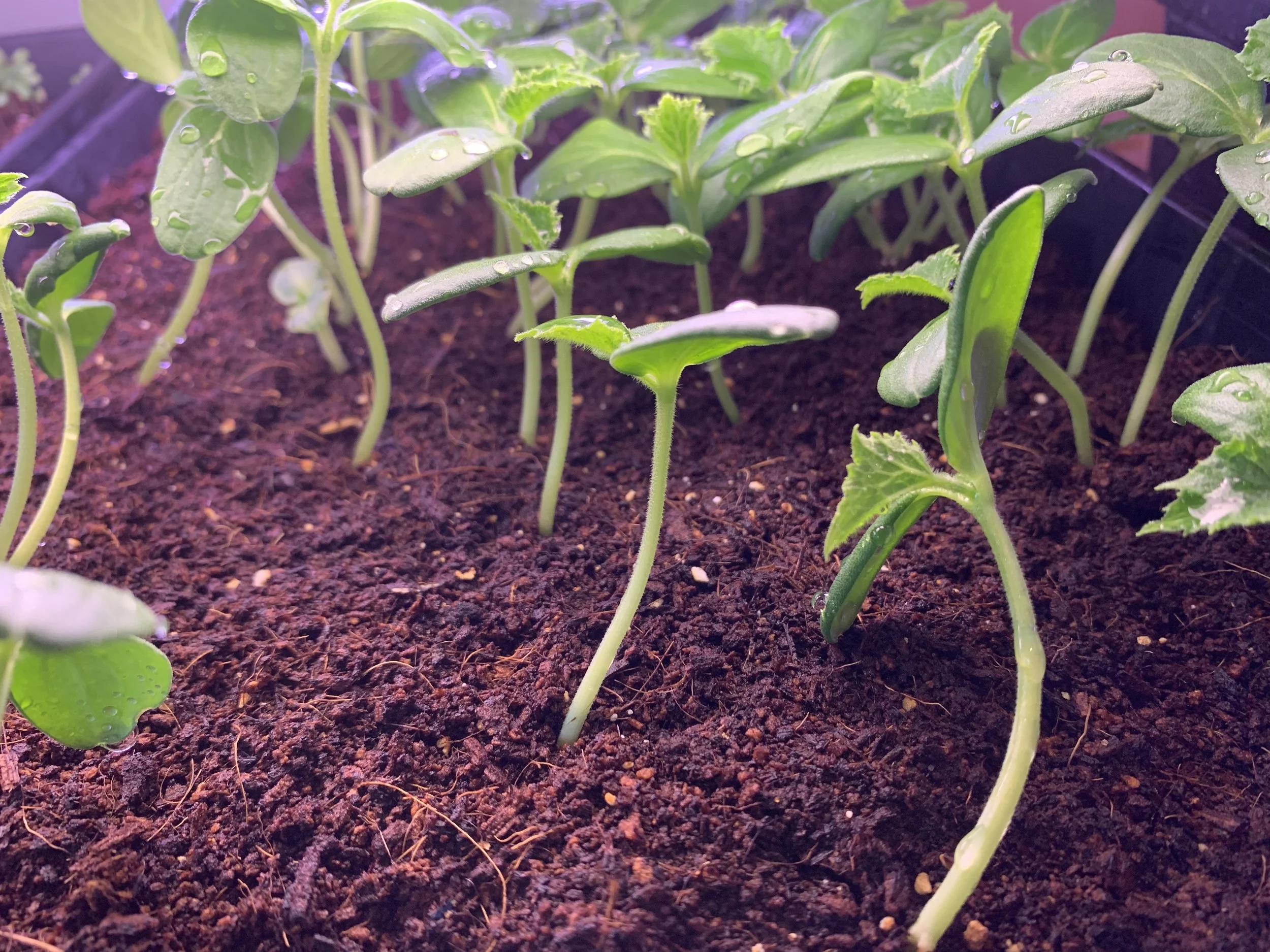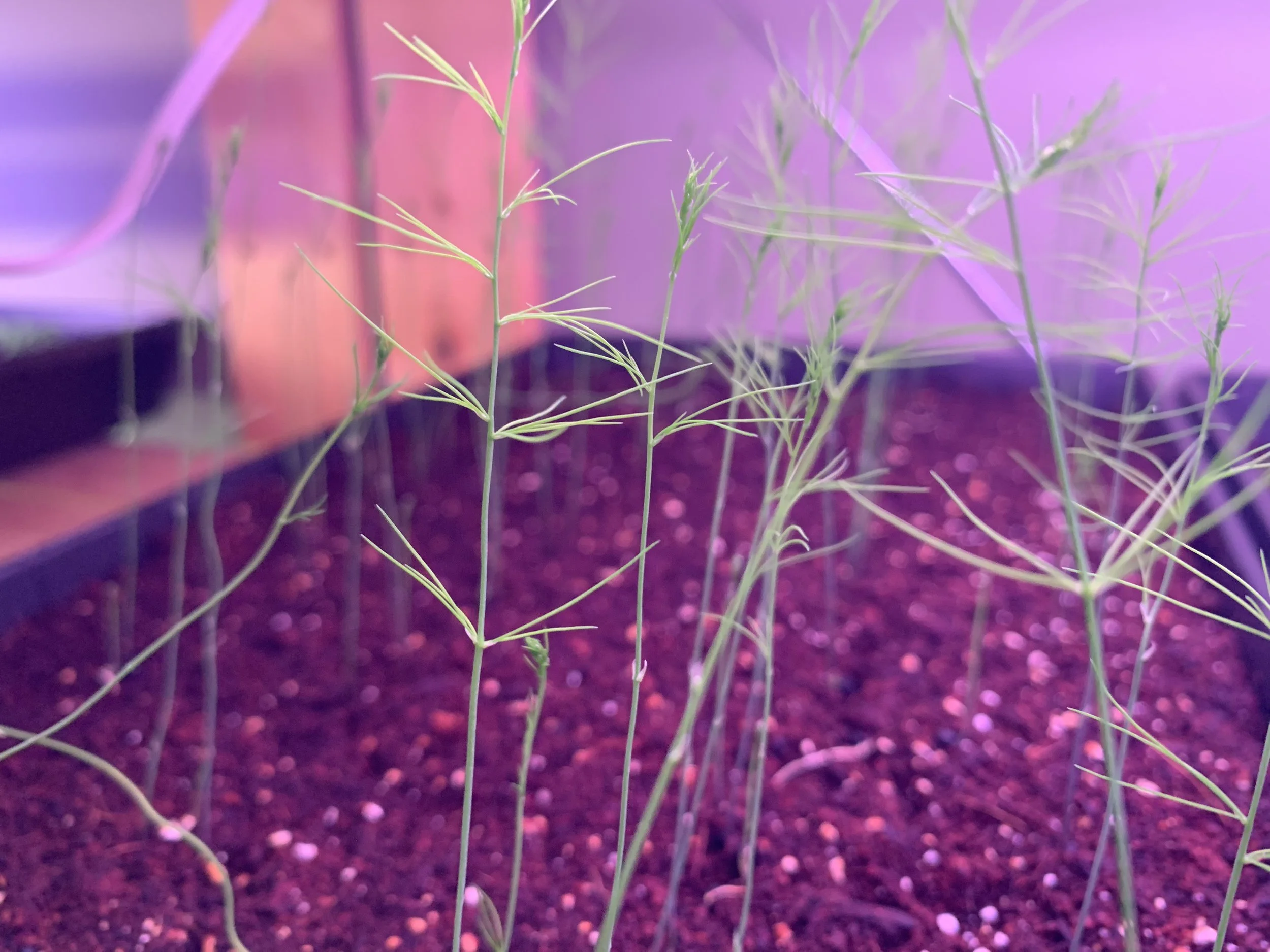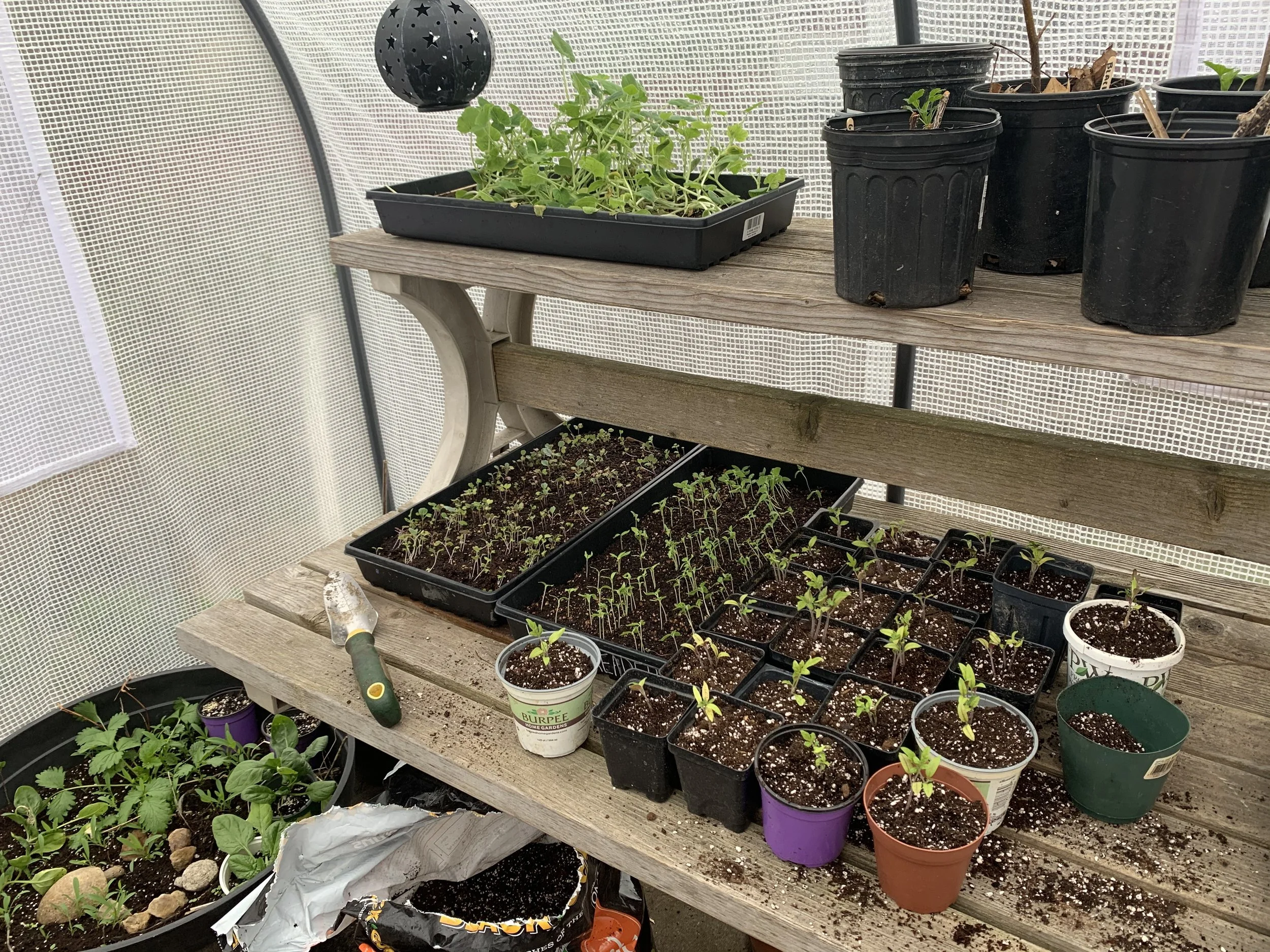Setting Up an Indoor Growing Station for Seeds: A Guide for Long Winter Gardeners
The best thing about an indoor growing space, is that it brings spring sensory indoors just a few months early - perhaps when it’s need most. Here we are playing in the soil, watering coconut coir for indoor seedlings.
A Green Space in the Long Winter
Winter in Zone 4 is long, often lingering well into spring with snowfall sometimes lasting through April. For gardeners eager to get a head start on the growing season, setting up an indoor seed-starting station is essential. Whether you have a dedicated greenhouse or just a small space inside your home, creating the right environment will ensure healthy seedlings ready for transplant when the weather warms. Here’s how to set up an efficient and productive indoor growing station.
A pile of beautiful heirloom seeds can be the best inspiration to start thinking about setting up an indoor space. With our short season, many of these must be started indoors well in advance of warmer spring weather for success.
1. Choosing the Right Location
Your indoor growing station doesn’t need to be elaborate, but it does need to meet a few key criteria:
Temperature: Most seeds germinate best between 65-75°F.
Light: A bright south-facing window can work, but grow lights will provide consistent light for stronger seedlings.
Humidity & Airflow: A dry indoor environment can slow germination. Using a humidity dome or placing a tray of water nearby can help. Gentle air circulation from a fan prevents mold and strengthens stems.
Space: Consider shelves, tables, or a compact greenhouse setup to maximize room.
Our indoor space is next to eastern sun, with a hard stone floor surface that is helpful for any small spills of soil or water. It is also close to an indoor sink / water source. We have floor and table work space, as well as shelves and grow lights to hold the trays.
2. Selecting the Right Equipment
Investing in the right tools can improve success rates and create an efficient system. Key items include:
Grow Lights: Full-spectrum LED or fluorescent lights, placed 2-4 inches above seedlings, provide essential light. We learned over time that the best set up is on an adjustable chain so you can lower or shorten the height based on how tall the seedlings are growing.
Seedling Trays & Containers: Reusable trays, biodegradable pots, or soil blocks keep seedlings organized. These can be as uniform or cobbled together as you like.
Heat Mat: Helps maintain a stable temperature, especially for warm-season crops. Depending on the indoor temperature of your set up, and the types of seeds you’re growing, this may or may not be necessary. We generally do not need this if we’re growing indoors. If we’re in a greenhouse, it’s a nice add.
Humidity Dome: Retains moisture to support germination.
Timer: Automates lighting to ensure seedlings receive 12-16 hours of light daily.
Our set up evolves every year. We’ve used leftover cups and containers of various sizes. We’ve used cardboard and plastic cups. We’ve used uniform seed trays, and soil in the larger trays. Much of this depends on what type of seed you’re growing, how many, and how long it’ll need to mature (what size it’ll grow to) while still indoors before transplanting. You can make this as specific as you’d like, or just experiment with what works best for you.
3. Best Seeds to Start Indoors
For Zone 4, starting seeds indoors extends the growing season and allows for earlier harvests. Consider these varieties:
Herbs: Basil, parsley, thyme, and lavender
Vegetables: Tomatoes, peppers, broccoli, cabbage, and lettuce
Flowers: Marigolds, zinnias, and echinacea (great for pollinators!)
January – February (10-12 weeks before last frost)
Perennials & Slow-Growing Herbs
Lavender, Rosemary, St. John’s Wort, White Horehound, Onions & Leeks
March (6-8 weeks before last frost)
Cold-Hardy Vegetables & Herbs
Broccoli, Cabbage, Kale, Chard, Chamomile, Yarrow, Anise Hyssop
Hardy Flowers
Echinacea, Black-eyed Susans, Marigolds
Late March – Early April (4-6 weeks before last frost)
Warm-Season Vegetables
Tomatoes, Peppers, Eggplants
Tender Herbs & Flowers
Basil, Zinnias, Cosmos
Mid to Late April (2-4 weeks before last frost)
Fast-Growing Summer Crops (Optional for Transplants)
Cucumbers, Squash, Melons
Warm-Season Flowers
Sunflowers, Nasturtiums
Direct Sowing (After Last Frost, Typically May)
Some seeds, like carrots, beets, radishes, peas, beans, and corn, do better when directly sown into the ground after the danger of frost has passed.
4. Companion Planting and Planning for Transplant
Thinking ahead to garden placement, consider companion planting even at the seedling stage. For example:
Tomatoes & Basil: Basil improves tomato flavor and repels pests.
Peppers & Marigolds: Marigolds deter aphids and nematodes.
Broccoli & Chamomile: Chamomile enhances plant resilience.
Starting seeds in biodegradable pots allows for easy transplanting, reducing root disturbance when it’s time to move plants outdoors.
Having a larger bucket for your soil indoors helps to contain any spills and can double as a clever workspace.
Seed depth and spacing will depend on what you’re planting and how many weeks it’ll remain indoors.
5. Troubleshooting Common Seed-Starting Problems
Leggy Seedlings? Move grow lights closer and ensure they run 12-16 hours a day.
Mold or Fungus? Improve airflow with a small fan and avoid overwatering.
Slow Germination? Check soil temperature—cool temperatures slow down seed sprouting.
6. Transitioning Seedlings Outdoors
Once outdoor temperatures warm, seedlings need to be hardened off—gradually exposed to outdoor conditions. Start by placing them outside for a few hours each day, increasing time over a week before transplanting into the garden.
For hardening off, we’ve experimented with different techniques. Some varieties are more fragile and susceptible to a chill than others. We start by opening our windows/doors to the indoor space for a little bit every day as the temperatures get warmer. Then we bring them outside in a hoop house (in the years we’ve maintained one) or just on a bench in the sun for a few hours. Gradually we work them up to overnight, being mindful of frost dates. I usually transplant the fragile seedlings into the ground once temperatures are warm, soil is soft, and the rabbits are well-fed by other more appetizing offerings (like dandelions!).
Final Thoughts
An indoor growing station is a game-changer for Zone 4 gardeners, ensuring a head start on the growing season despite long winters. Whether you're growing vegetables, herbs, or pollinator-friendly flowers, a well-planned setup will give your plants the best chance to thrive. Happy planting!

